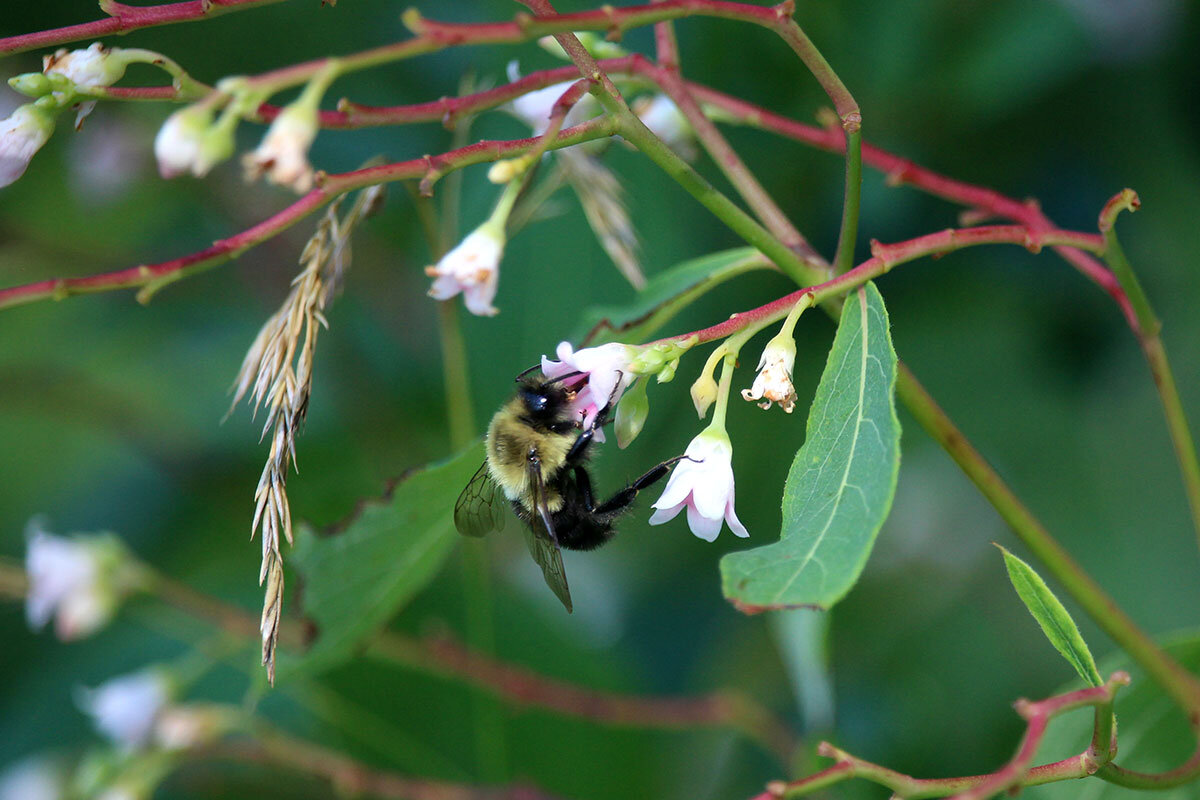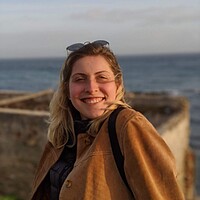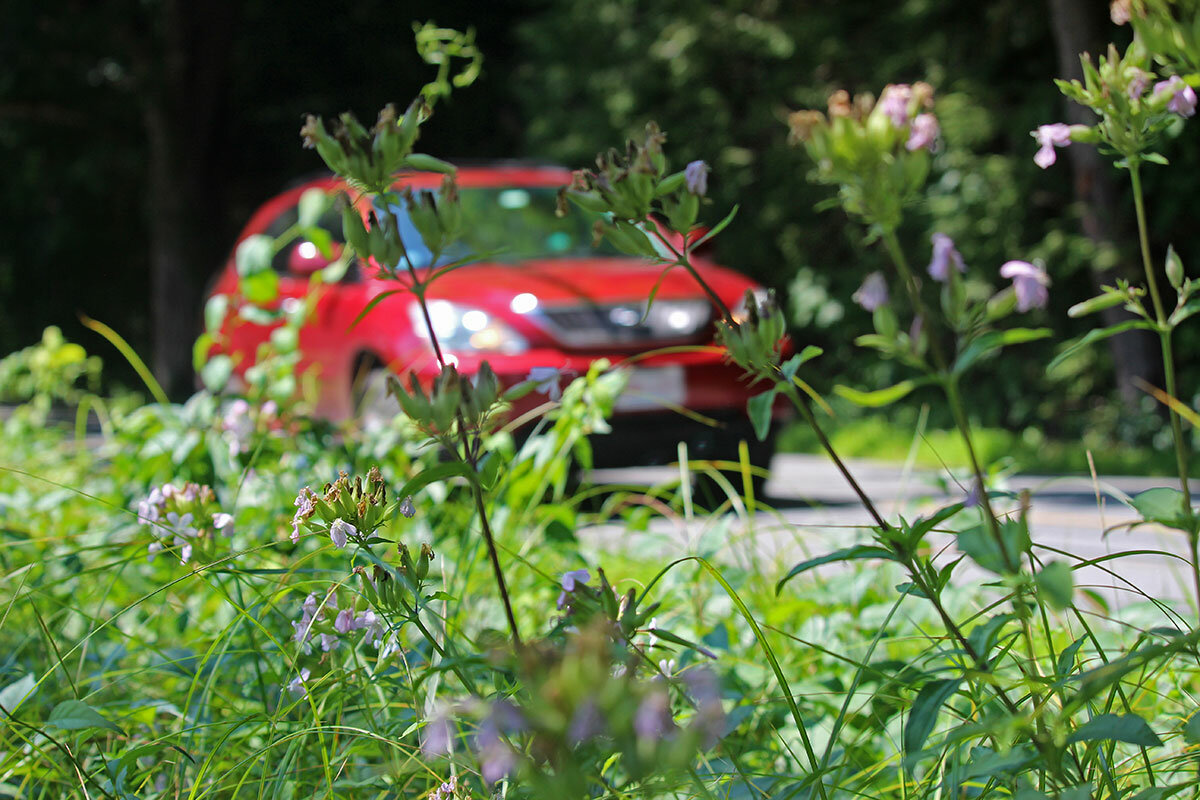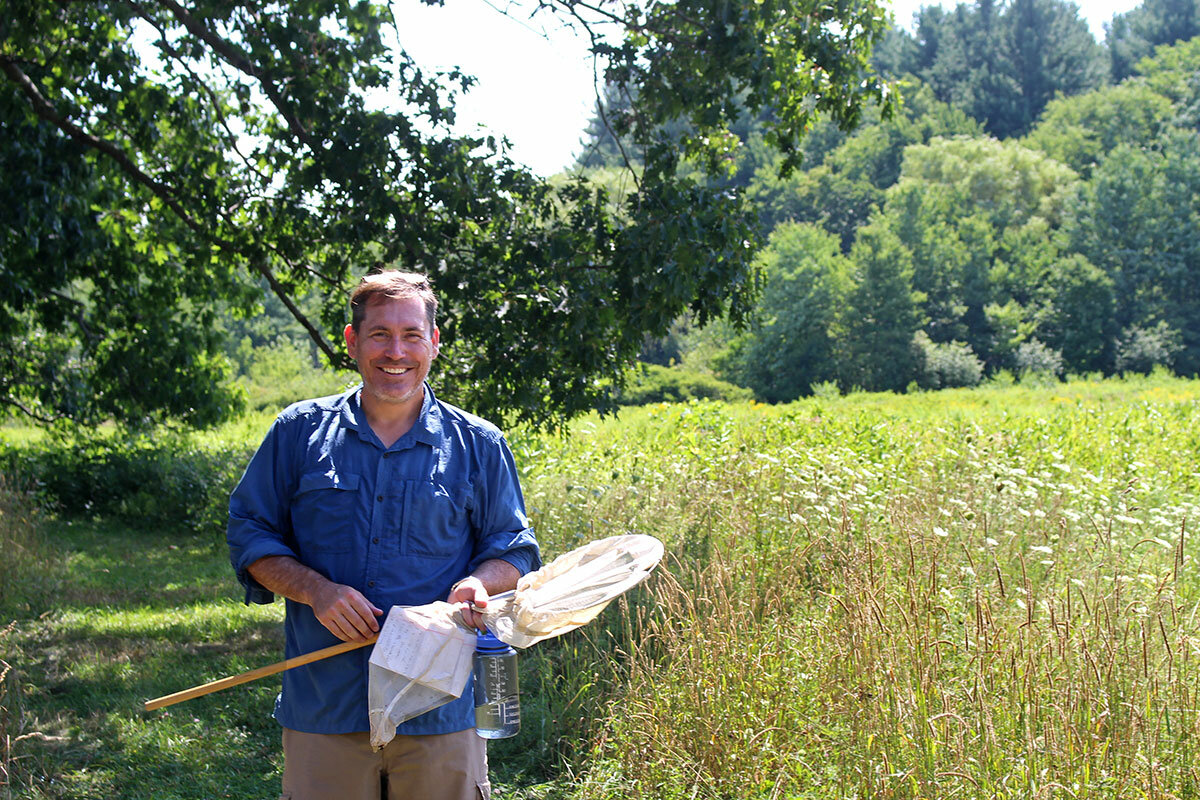Can roadsides offer a beeline for pollinators?
Loading...
| Lincoln, Massachusetts
It’s early morning in Meriden, Connecticut, and a foraging bee is making its way from flower to flower, stopping here for a sip of nectar, there for a nibble of pollen. It floats into a patch of flowers, unperturbed by the waves of tailwind from passing vehicles. Here, at Exit 67 off the Wilbur Cross Highway, there is plenty to snack on.
The small patch of wild growth is here by design. Specifically, Adam Boone’s design. He’s a transportation landscape designer at Connecticut’s Department of Transportation (DOT), and he’s watched this swath of highway-side grow into a verdant pollinator habitat.
“I’m encouraged,” he says of the wildflowers popping up after a few seasons of cutting back on mowing. “You just have to see what comes up.”
Why We Wrote This
Sometimes the best solution is a light touch. This can be especially true when it comes to protecting threatened wildlife.
Mr. Boone is part of a national network of government agencies, highway divisions, and conservation groups working to set aside public land on the sides of highways as habitat for declining pollinators. In practice, that largely means reduced mowing. Such programs mark a shift toward maintaining highways with an eye on wildlife conservation.
“You drive along the roadside at 60 miles per hour and see splashes of color, and you recognize that there are probably flowers out there,” says Jennifer Hopwood, senior pollinator conservation expert for The Xerces Society for Invertebrate Conservation, an environmental nonprofit based in Portland, Oregon. “We have to be really creative about finding ways to support pollinators in where we live, where we work, where we travel. … So roadsides are a piece of that puzzle.”
That jigsaw is taking shape along Connecticut’s highways, a few years after the state’s DOT started setting aside roadside spots for pollinator habitat. “It’s a developing program” without so much as an official name, Mr. Boone says, and “a whole different strategy” from the norm of frequent mowing.
It works like this: Mr. Boone or local officials identify roadsides that could grow wild without turning into a fire hazard or obstructing drainage, drivers’ sightlines, or access to roadside structures. Then, Mr. Boone surveys the existing plant life. “There may be some nice things already in there,” he says, listing some options over the phone – black-eyed Susan, big bluestem, and goldenrod are good signs. “In that case, let’s just leave it alone,” he says. Otherwise, he’ll plant seeds and wait for blooms.
Roadside attraction
Ms. Hopwood is also no stranger to tramping around roadside habitats. She spent a summer in the early 2000s counting bees on Kansas’ sprawling prairie roadsides for research. What was then a nascent field of study has since been endorsed by the Federal Highway Administration and bolstered by former President Barack Obama’s 2015 monarch butterfly corridor plan. Today, at least have integrated pollinator habitats onto their roadsides, according to the Federal Highway Administration’s website.
But that kind of individual initiative has a flip side, says Evan Abramson, pollination systems designer and planner at Landscape Interactions. His company, based in Northampton, Massachusetts, designs ecological landscapes.
“Seeing lots of bees on the landscape, or seeing lots of pollinators, doesn’t necessarily mean that it’s pollinator-friendly, because [the insects] all might be just one or two species,” he says.
Basically, “not all pollinators are in trouble,” echoes Robert Gegear, a conservation biologist, assistant professor of biology at University of Massachusetts, Dartmouth, and scientific consultant at Landscape Interactions.
Dr. Gegear is wading through wildflowers at Browning Fields conservation land in Lincoln, Massachusetts. He points out a common eastern bumblebee in a clump of red clover. This bee species isn’t in trouble, he says, unlike the half-black bumblebee buzzing nearby.
A “more comprehensive approach”
But making a truly biodiverse pollinator habitat requires lots of site-specific research and planning, not to mention time; Dr. Gegear comes to the Browning Field conservation site every week. The good thing is, that information can be shared within habitat regions, says Mr. Abramson.
Information sharing is a big hurdle, says Heather McCargo, founder and executive director of the Wild Seed Project, a nonprofit in Portland, Maine, that promotes native plants. Ms. McCargo wrote a 176-page field guide of plant species and their preferred mowing practices with Maine DOT in 2018. She hoped it would become a resource for highway maintenance workers.
“They should not assume every plant they see is bad or needs to be mowed,” she said, pointing to plant identification apps as another easy resource. “It’s just, mowing has become the default.”
Interest is growing, Ms. McCargo says, though “the process is really slow.”
But at Mr. Boone’s highway plots, things are progressing nicely. “The reduced mowing alone is having a great impact,” he says. Next year at one site, Mr. Boone is planning to transplant existing wildflowers in hopes of propagating over a bald spot.
A doable strategy for other DOTs: “Just start with what you can manage.”
As cars and bicyclists whiz by the conservation land in Lincoln, beetles march purposefully through the undergrowth, their armored backs to a blazing sun.
Dr. Gegear shoulders his butterfly net and peers at a bee in the flowers. “We need to target the ones that are in trouble,” he says. “We need to have a more comprehensive approach.”







